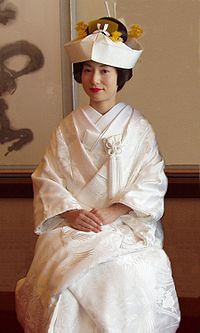Javanese batik art is a cultural heritage of Indonesia, especially Java-controlled areas of Java from generation to generation. Javanese Batik motifs has an different. The difference is common motives motives dikarnakan it has meaning, that is not just an image but it implies that they can from their ancestors, the religion of animism, dynamism, or Hinduism and Buddhism. Javanese Batik in many developing regions Solo or commonly known as Solo batik.
 Batik is a craft that has high artistic value and has become part of the culture of Indonesia (especially Java) for a long time. Javanese women in the past made their skills in batik for a living, so in the past, batik work is exclusively women's work until the invention of "Batik Cap" which allows the entry of men into the field. There are some exceptions to this phenomenon, namely that the coastal batik masculine lines as you can see in shades of "Mega Clouds", which in some coastal areas batik work is common for men.
Batik is a craft that has high artistic value and has become part of the culture of Indonesia (especially Java) for a long time. Javanese women in the past made their skills in batik for a living, so in the past, batik work is exclusively women's work until the invention of "Batik Cap" which allows the entry of men into the field. There are some exceptions to this phenomenon, namely that the coastal batik masculine lines as you can see in shades of "Mega Clouds", which in some coastal areas batik work is common for men.Batik tradition was originally a hereditary tradition, so occasionally a recognizable motif batik originated from a particular family. Some batik motif can indicate the status of a person. Even today, some tadisional batik motif is only used by the family court of Yogyakarta and Surakarta.
see more
 The kimono is a Japanese traditional garment worn by women, men and children. The word "kimono", which literally means a "thing to wear" (ki "wear" and mono "thing"), has come to denote these full-length robes. The standard plural of the word kimono in English is kimonos, kimono is also sometimes used. but the unmarked Japanese plural
The kimono is a Japanese traditional garment worn by women, men and children. The word "kimono", which literally means a "thing to wear" (ki "wear" and mono "thing"), has come to denote these full-length robes. The standard plural of the word kimono in English is kimonos, kimono is also sometimes used. but the unmarked Japanese plural Kimonos are T-shaped, straight-lined robes worn so that the hem falls to the ankle, with attached collars and long, wide sleeves. Kimonos are wrapped around the body, always with the left side over the right (except when dressing the dead for burial), and secured by a sash called an obi , which is tied at the back. Kimonos are generally worn with traditional footwear (especially zori or geta ) and split-toe socks (tabi).
Today, kimonos are most often worn by women, and on special occasions. Traditionally, unmarried women wore a style of kimono called furisode, with almost floor-length sleeves, on special occasions. A few older women and even fewer men still wear the kimono on a daily basis. Men wear the kimono most often at weddings, tea ceremonies, and other very special or very formal occasions. Professional sumo wrestlers are often seen in the kimono because they are required to wear traditional Japanese dress whenever appearing in public.
(source)
(source)
Subscribe to:
Comments (Atom)

